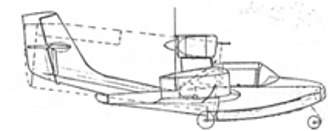 |
|
|
|
|
|
Welcome to my Online Cootery The Online Construction Record of Russ Milham's Taylor Coot-A Amphibian |
|
|
| WoW Check: 313 lbs |
|
Galleries |
| New Shop! |
|
Links |
|
Musings |
| My first look |
|
Reference |
| Contact |
The Compromises (another living list)
The more I talk to builders and learn about the Coot's "shortcomings," the more I admire the way that Molt Taylor managed them and the more I admire the things that the Coot appears to do well. At the end of the day, as a builder, it is my job to acknowledge the Coot for what it is, appreciate it for what it can do well, and accept what it isn't.
As a pilot, it is in my best interest to determine and capitalize on the Coot's capabilities such that I can realize its greatest utility. It is also in my best interest to understand and respect the Coot's limitations such that I can continue to do the former.
Some of the Coot's key attributes/compromises and why it's still okay to build one
It has 7-degrees of dihedral
- Which allows it have lateral floatation integrated with the wing structure and also have the flying surfaces out of the water so that it can... you know... take off
- Lateral buoyancy close to the longitudinal axis allows it to step taxi with greater inherent stability than a floatplane or a hull-type seaplane that incorporates outboard sponsons
- Integrated sponsons simplify airframe construction
- This dihedral also makes it heavy in roll
- It will never be a personal fighter aircraft
It has an integrated buoyancy hull/fuselage (it's a flying boat)
- It should be more boat-like in water handling
- But it has to have a pylon-mounted engine
- And it has to have comparatively high thrust-line
- Lake hasn't worked this one out either - because it's an attribute and not a problem
The fuselage has to balance aerodynamics with hydrodynamics.
- It must:
- Enclose the occupants
- Support the structure
- Fair in and contain its retractable landing gear
- Keep out both wind and water (i.e., both fly and float)
- Thus, it must also:
- Taper rapidly from the cabin enclosure, wing spar carry-through, and engine pylon bearing structure to the tail
- Have a hard time maintaining unseparated airflow:
- Through the prop disk
- Over the rapidly tapering tail
- So, it may also end up with some yaw instability - Something Cessna, and most floatplanes have a hard time with too; although the cause for them has more to do with the floats blanking the tail while in landing configuration
So, its hull has to eventually end somewhere in order for it to streamline
- This ends up meaning that
- Its wings can lift more than its hull can step
- It can fly off of land heavier than it can lift off of water
- It is likely that every amphibian in existence has these same attributes
It is constructed primarily of wood, steel, and sheet aluminum
- That rots, rusts, and corrodes, respectively
- Duh! No revelation here
- It requires traditional building techniques
- Readily available non-exotic material
Plans-built means that the project can be scaled to suit the builders budget and space constraints
- Builder has to find, scrounge, evaluate, and select everything
- Couldn't get much better than that!
This page last updated on 05/18/2008